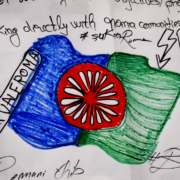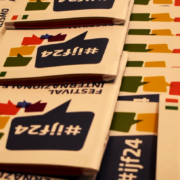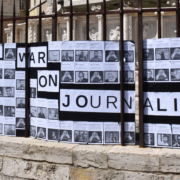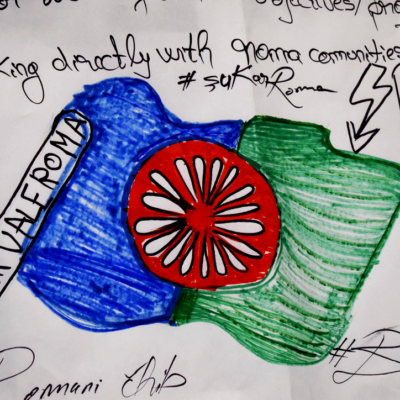By Rana Khaled
“Nowadays, you don’t need a camera man; we have millions of them since everyone has a smart phone, can make photos and videos, and upload them easily. However, we have to make sure that what they claim to show is right,” says Michael Wegener, the head of the content center at ARD News.
Because of the increasing independence on the user-generated-content (ugc) and the increasing value of citizen journalism nowadays, it became necessary for the local and international media institutions to verify the stories, videos and photos posted by ordinary citizens on the social media, especially when it comes to the coverage of important events and issues.
To help make it easier for media practitioners to verify the data they receive, a number of international institutions launched a UGC verification network trial, that includes France 24, DW, TFI, ERNO, ITV, BBC and many others.
“Media is about trust. It’s about how many readers trust the information we provide and that’s why we have to do anything that can make us trustworthy,” Wegener says.
Verification of basic metadata:
Verifying stories and videos is a multi-stage process, that consists of four steps. The first stage includes verification of basic metadata. In other words, finding out the extent to which the information provided in the story is consistent with what was published by the other sources. It’s important to know where, when and how the video was shot and who are the people included. It’s also important to determine the exact location.
“For example, we can use Google image reverse search that shows how the material was uploaded. Recently, we saw a video about plane crash in Southern France on which the source added the name of Reuters to make it look more authentic. When the video was verified, we found that it was shot in 2007 for an earlier accident,” Wegener says.
Using free tools like wolframalpha and sunncale can help verifying when the material was really shot and when it was uploaded. Also, photo collections like “panoramio.com” can help verify the location and make sure if the place that appears in the video is correct.
Verification of the source
“The second step includes verifying the source itself as we have to ask about the extent to which we trust the source and whether we’ve worked with it before or not. In addition, we have to check the number of followers a source has and how its posts are discussed in the community by looking at the comments below them. You need also to contact the source and get more information about how the material it provides was shot,” Wegener continues.
Verification with the help of experts
The third stage includes verification with the help of experts. “We have to have a databank, they could be colleagues from the region, trustful users, experts from twitter-lists, colleagues from cultural or developmental organizations or experts who can help you to verify the information,” he adds.
Technical verification
However, the last step of data verification spot lights on the technical aspects of the provided materials. Wegener explained that there are some tools to help you know if the photos were manipulated and if the metadata have been altered or erased. “An example for this is jeffery’s image metadata viewer where you can upload the photo and know if it was altered. It helps to know if something was changed there,” he concludes.










